The Lowdown
I was genuinely impressed with the iQOO 12 during my testing. As the first smartphone I’ve tried with the Snapdragon 8 Gen 3 processor, I found its performance to be fantastic; it’s responsive and speedy. The build quality is top-notch, and it has a premium feel that you’d expect from a much pricier device. On top of that, the cameras are top-notch. With a starting choice at under $600, it should be a compelling option. Unfortunately, the iQOO 12’s network bands are not supported by enough carriers to make it a viable option if you live in the States, and therein lies the rub.
Overall
Pros
- Solid, minimalistic yet premium build
- Powered by Snapdragon 8 Gen 3 and offers excellent speeds and performance
- Built-in Infrared port
- Large, bright, and responsive display
- 120W wired charging (UK charger included)
- Dual nano-SIM
- Highly capable cameras
- Great option if you are in Asia, Europe, or Australia
Cons
- Not supported by most U.S. carriers (YMMV)
- No wireless charging
- IP64 rating means it can be splashed but not submerged
- No word on what type of glass is used in the display, so keeping a protector installed would be prudent
IQOO stands for “I Quest On and On.” Though this emerging Vivo smartphone sub-brand may be unfamiliar to those in the U.S., it’s earning a reputation for combining flagship chipsets with smartphones that emphasize mobile gaming. The iQOO 12 Legend Edition adds a sporty twist to premium styling that will appeal to minimalist design fans as it’s a powerful daily driver with few compromises. Although the iQOO brand is aimed at users in Asia, Europe, and Australia, by the end of this review, I think you’ll agree that it’s too bad iQOO hasn’t yet set its sights on the States.
IQOO (pronounced eye-coo) is a company under the BBK Electronics brand umbrella, which also includes OPPO, OnePlus, realme, and IQOO’s parent company, Vivo. You’ll no doubt recognize at least a few of those brands, so it should come as no surprise that even though IQOO is relatively new, having just been founded in 2019, it’s not just some “new kid in town” start-up without support.
The 12 series is iQOO’s latest flagship smartphone line, which includes the 12 and 12 Pro. The IQOO 12 Legend Edition is one of the two IQOO 12 models available, which include the Alpha, a black version made with a fluorite glass back, and Legend, a white enameled glass version with tricolor racing stripes that we’ll be focusing on in this review.
The iQOO 12 is powered by the latest flagship Qualcomm Snapdragon 8 Gen 3 mobile platform, with up to 512GB storage and up to 16GB LPDDR5X RAM (touted as 34% faster than LPDDR5) with expansion of up to 16GB on top of the base RAM. The phone runs Android 14 with an IQOO FunTouch 14 overlay.
The iQOO 12 features a flat 6.78″ 1 to 144 Hz low-temperature polycrystalline oxide (LTPO) AMOLED Display (2800×1260) with Game Super Resolution (to “deliver clearer images beyond the limit of native resolution”), 452 pixels per inch, and 3000 nits of local peak brightness (so it is easy to see the display when in bright sunlight), and 1400 nits in high brightness mode (HBM).
LTPO technology helps the iQOO 12’s display manage power more efficiently; with it, the screen can dynamically adjust its refresh rate, meaning it can switch between high and low refresh rates based on what you’re doing. When you’re not actively interacting with your device, it can lower the refresh rate to save power, contributing to longer battery life.
Having up to a 144Hz refresh rate means the iQOO 12’s screen can refresh its content 144 times per second. This results in smoother animations and transitions, making everything you do on your device look more fluid and responsive, especially when gaming or watching videos.
Using this type of dynamic refresh rate not only saves power it also optimizes the display for different activities. So, when you’re viewing static images or reading, it can lower the refresh rate to conserve energy, but when you’re engaging in fast-paced activities like gaming, the refresh rate can ramp up to 144Hz for a smoother experience.
A pulse width modulation (PWM) of 2160Hz means that the iQOO 12’s display shouldn’t have any noticeable flicker, which can help to reduce the headaches and eyestrain some people experience from smartphone displays when using them in lower light environments. You can read more about PWM and the benefits of smartphones with higher PWM by clicking here.
On top of the 144Hz refresh rate, gamers will appreciate that the iQOO 12 has symmetrical dual stereo speakers for immersive sound, super low touch control latency, wet touch technology that uses AI models to recognize sweat characteristics to optimize touch control in a targeted way (which is also handy for unlocking then phone when it’s raining), a 6K vapor chamber (VP) four-zone cooling system, and a large X-axis linear motor that offers skill-customizable in-game vibrations.
The iQOO 12 has a 5,000mAh pro-performance graphite battery with up to 120W wired fast-charging ability, WiFi 7, and Bluetooth 5.4. It can be unlocked with a PIN, an under-display fingerprint reader about 0.5″ up from the bottom of the screen (which feels a little low but is not a deal-breaker), and facial recognition.
Now, let’s take a look at the phone.
Unboxing the iQOO 12 Legend Edition
Inside the retail box, you’ll find the phone, a clear TPU case, a card touting iQOO’s BMW M Morotosport partnership, a USB Type-C to USB Type-C charging cable, a 120W UK Vivo FlashCharge wall charger, a SIM tool, a quick start guide, and an important information and warranty pamphlet.
There is also a factory-installed film screen protector on the display, which I appreciate.
IQOO 12 Legend Edition Walk Around
The iQOO 12 Legend Edition measures 6.43″ tall by 2.99″ wide by 0.34″ thick, and it weighs 7.2 ounces. The front of the smartphone has a 6.78″ flat display, which I greatly prefer to “premium” displays with beveled edges. The top, bottom, and sides have a flat, silver aluminum alloy frame that appears a bit iPhone-esque; it’s an attractive design choice that feels comfortable in hand.
At the center top of the display, there is a very thin ~1.5″ long ear speaker with a 16-megapixel punch-hole selfie camera underneath; this camera can record video in 1080p.
The iQOO 12’s selfie cam has a wide-angle lens with an f/2.5 aperture. It has several features to enhance your selfies, such as AI beauty for automatic adjustments (you can use it to literally change the shape of your face), portrait mode for creating a blurred background effect, and HDR for improved contrast and color in challenging lighting conditions.
If you plan to record video with the front camera, you’ll find that it supports shooting at 1,080p resolution at 30 frames per second (fps).
Some users might find this somewhat limiting compared to other flagship options, as the iQOO 12 doesn’t support 4K recording at 24fps. But if you’re primarily interested in taking selfies and making occasional video calls with this particular camera, the iQOO 12 should do nicely.
One thing worth noting is that there is nothing said about what type of glass is used in the display, so keeping a protector installed would be prudent.
On the top is a speaker, an Infrared sensor, a microphone, and two antenna bands. Infrared sensors aren’t something we see in many American smartphones, but it’s a feature that the OnePlus Open also has that I’ve enjoyed taking advantage of, especially on my office TV. It’s great to see it here.
On the right side is a power button and a volume rocker with two antenna bands on the upper half.
A single antenna band is located about an inch from the top of the phone on the left side.
On the bottom, there is a dual SIM tray, a microphone, a USB Type-C port, and a speaker.
Flipping the iQOO 12 Legend Edition over reveals the slightly beveled white enameled glass with the iQOO logo on the bottom right, the tagline “Fascination Meets Innovation,” the tri-color BMW M racing stripes in blue, black, and red (which glow like mini reflectors when light hits them), and the larger “porthole” camera module with a dual LED flash to the right.
One side benefit to having this larger camera module is that the phone doesn’t wobble when it is placed on a flat surface, even when it’s not in a case.
I think you’ll agree that this back design is visually appealing; overall, the phone looks and feels like a premium device. I honestly had to remind myself several times that although this is an iQOO flagship phone, it is priced more like what we’re used to paying for a mid-range phone in the United States. It doesn’t feel like many corners were cut in specifications or build quality.
The iQOO 12 Cameras
The iQOO 12 camera module protrudes from the smartphone’s back by about 2.5mm; the bottom half of the module’s bezel is vertically etched, which gives it a bit of visual interest reminiscent of a watch’s bezel. Curved metal edges at the top of the bezel meet glass, which covers the three cameras in the module, eliminating separate protrusions for each lens, like we’re used to seeing on newer iPhones.
The effect is quite nice, and I appreciate that it’s easier to swipe the whole module clean with a microfiber cloth rather than having to try to get in around separate camera lenses (a minor pet peeve of mine on the iPhone).
“100X Tele Lens” is noted on the bottom of the camera module, and on the right, next to the dual LED flash, it’s noted “Ultra Sensing 1.68-2.57/15-70 ASPH (aspherical design).”
The bottom left lens is the 1/1.3″ 50-megapixel main camera with optical image stabilization (OIS) 2.0 to enhance stabilization with Bionic Night Sky Enhancement Technology for night photos, or “Astrography,” as they are calling it.
The upper left lens is the 64-megapixel telephoto periscope camera (also used for portrait mode), which offers 3X optical zoom, 100X digital zoom, and OIS; on the upper right is the 50-megapixel ultra wide-angle camera.
The iQOO 12 comes with a versatile set of camera features, including Snapshot, Night, Portrait, Photo, Video, High Resolution, Panoramic, Ultra HD Document scanning, Slo-mo (slow-motion), Time-lapse, Long Exposure for low-light scenes, Supermoon for celestial photography, Astro for astrophotography, Tilt-shift for creative effects, and Pro for more advanced manual controls; optical image stabilization (OIS) and electronic image stabilization (EIS) are offered.
With the rear camera, you can shoot videos in 8K at 30 frames per second (fps), 4K at 24/30/60fps, and 1,080p at 30/60/120/240fps.
Photos Taken with the iQOO 12
The iQOO 12’s camera impressed me for a couple of reasons, not the least: it does an excellent job in low or poor light. The zoom functions are excellent, and — other than the fact that it was hard to hold my hands steady for the 100X photo, it’s almost as good as a pair of binoculars!
iQOO 12 Processor Performance and Battery Life
The iQOO 12 is powered by the newest Snapdragon 8 Gen 3 chipset, which serves as the brain of the device. This chipset is designed using a 4nm architecture, which is touted for its high efficiency and performance.
The phone’s central processing unit (CPU) consists of eight cores, each with a specific function. Among these, the Cortex-X4 operates at a speed of 3.3 GHz, the Cortex-A720 cores run at 3.2 GHz, and the Cortex-A520 cores function at 2.3 GHz.
For handling graphics and ensuring a seamless gaming experience, the iQOO 12 uses the Adreno 750 GPU. This graphics processing unit renders images and maintains the device’s overall performance during graphic-intensive tasks, such as gaming.
The iQOO 12 runs Android 14 with iQOO’s Funtouch 14 user interface. This combination provides the latest Android features, and the good news is that iQOO’s customized UI doesn’t feel like it adds a ton of unnecessary stuff to Android; it’s pretty clean, yet it offers a bit more customization than stock Android.
On top of that, the iQOO 12 has a dedicated Q1 chip to enhance the gaming experience. To improve responsiveness during gameplay, the iQOO 12 incorporates low-latency frame insertion. This technology reduces the delay between your actions and the corresponding on-screen response, ensuring the smartphone reacts quickly to your commands.
The superframe technology on the iQOO 12 is designed to maintain consistent frame rates, even in demanding gaming scenes, so that the graphics will remain smooth and stable without disruptions or lag.
Another noteworthy feature is the super-resolution technology, which enhances the clarity of graphics by amplifying textures. This results in sharper and more detailed visuals, providing an immersive gaming experience with maximum visual impact.
The iQOO 12 has a large X-axis linear motor, which may sound technical, but it’s a vibration component designed to enhance gameplay.
When you’re using the iQOO 12 — tapping or performing gaming actions, for instance — this motor responds quickly with a 13.1 milliseconds steady-state vibration startup time. This means the vibrations kick in almost instantly, adding a quick and responsive feel to your interactions.
The motor operates within an 85 Hz bandwidth, which indicates the range of frequencies it can produce. In other words, it can generate a variety of vibrations, each with its own distinctive feel.
What does all of this mean for you? These features collectively allow the iQOO 12 to provide skill-customizable vibrations so the device can offer tailored and precise vibrations corresponding to different in-game actions. This is intended to make your gaming more immersive and add a layer of feedback that makes the overall experience more satisfying.
Overheating can become an immediate concern when in an extensive gaming session or handling demanding tasks on a mobile device. Gamers, in particular, find issues like lag, frame per second (fps) drops, and heating quite bothersome; the iQOO 12 addresses this concern by incorporating a 6K VC Four-Zone Cooling System.
To begin, it targets heat dispersion in the specific areas where users naturally place their thumbs while gaming to help the device efficiently dissipate heat in the regions most prone to warming up during extended play.
The IQOO 12 also has an under-display graphite cooling film along its bezels that plays a crucial role in managing temperatures by efficiently conducting and dispersing heat away from the device so the smartphone’s screen stays within optimal temperature ranges.
To enhance these cooling mechanisms, the iQOO 12 uses an AI-driven cooling engine that leverages Thermal Identification 3.0 and is complemented by a Temperature Control Strategy Engine.
TL;DR: the iQOO 12 has a more advanced cooling system that is better at keeping the device cool during intensive use, whether gaming or using other processor-intensive apps. The iQOO 12 aims to deliver a top-notch gaming experience with advanced technologies designed to optimize visual quality, responsiveness, and overall performance.
The iQOO 12 comes with a robust 5,000mAh battery, which should provide ample power to keep your device running throughout the day. What makes it even more impressive is the support for fast 120W wired charging, meaning you can quickly juice up your phone when needed.
Unlike the iQOO 12 Pro, which includes wireless charging capabilities and supports reverse wireless charging, there are no wireless charging capabilities in the IQOO 12. However, this shouldn’t be an issue as the phone recharges quite quickly with a laptop charger and the included cable. Bear in mind that I couldn’t test the 120W UK charger it came with, but I have no complaints.
Regarding staying connected, the iQOO 12 supports WiFi across different standards (802.11 a/b/g/n/ac/6/7) and tri-bands, ensuring a reliable and speedy internet connection. Additionally, it features Bluetooth 5.4 for seamless wireless connections with other compatible devices, such as headphones or speakers. The phone is also equipped with dual nano SIM card slots, offering flexibility for users who need multiple phone numbers or travel internationally.
The iQOO 12 supports the following network bands:
2G GSM: 850/900/1800/1900 MHz
3G WCDMA: B1/B2/B4/B5/B8
4G FDD-LTE: B1/B2/B3/B5/B7/B8/B20/B28A/B28B
5G: n1/n3/n5/n7/n8/n28A/n28B/n38/n40/n41/n77/n78
I’m on AT&T in Texas, and while someone in a less rural area might have better luck, I was not able to get the iQOO 12 to do more than show one bar using 4G, and it could not make calls or send texts; this isn’t completely surprising, as it’s not listed as a tested and approved AT&T device. This would obviously be a deal-breaker if I wanted to use the iQOO for its primary purpose — as a communication device.
I checked the iQOO 12’s IMEI with T-Mobile and found it was listed as an incompatible but not blocked device. Verizon told me the device wasn’t valid; oddly enough, Mint Mobile said it was compatible, but I can’t verify that.
So, for the most part, those of us in the US should be very cautious about importing this phone. Still, if you are in other parts of the world — particularly Asia, Europe, and Australia — you’ll have a much better experience.
Using the iQOO 12
The iQOO 12 Legend Edition is an unlocked phone; even so, It comes with a fair amount of pre-installed software, some of which you might consider bloatware.
A quick look shows V-Appstore (Vivo’s app store), iQOO Browser, iManager (security scans, data management, and space cleanup for the phone), Themes (a selection of iQOO-specific themes, fonts, wallpapers, and always-on-display themes), iQOO.com, iQOO Cloud (for backing up contacts, SMS, messages, notes, and other data), iQOO Messages, Music, EasyShare, Notes, Video, Game Center, Smart Remote (this is the built-in Infrared remote, which is cool), a “Hot Apps” folder, a “Hot Games” folder, TikTok, Spotify, Albums, Netflix, a folder of “Recommended Apps,” and a nano music widget.
The iQOO 12 also comes loaded with an almost full suite of Google Apps, which most US users are already familiar with and using, making some of those pre-installed iQOO/Vivo versions unnecessary.
Apps that aren’t already pre-installed, like Google Clock, Messages, Phone, Contacts, Find My Device, Gallery, and others, can easily be downloaded from the Play Store. Most importantly, Google Wallet works with this non-US-focused phone, so you can use stored cards and accounts in tap-to-pay situations.
All but iQOO Cloud, Music, EasyShare, iQOO.com, iQOO Messages, Game Center, Clock, the “Hot Games” folder, the “Hot Apps” folder, Albums, Themes, V-Appstore, Browser, Video, Smart Remote, Notes, Smart Remote, Weather, and Contacts can be uninstalled if you won’t need them; these apps can at least be hidden.
The iQOO 12 is IP64-rated for dust and water resistance, which means that it’s fully protected from dust ingress and water spray from any direction; in other words, you can consider it safe to use in the rain or when lounging by the pool or hot tub, but it’s not going to be protected if it gets dunked in the water, so keep that in mind.
The iQOO 12 has a spacious 6.78″ AMOLED display with a brightness of up to 3000 nits, making it very viewable even in bright sunlight. It also supports HDR10+ to deliver vibrant and detailed visuals and boasts a refresh rate of up to 144Hz.
The dynamic refresh feature allows it to adjust automatically to 1Hz when viewing static images, which helps with battery life. Still, the high refresh rate will make everything look much smoother when playing games or doing something more demanding onscreen.
The phone does an excellent job of adjusting the screen refresh rate based on what’s being displayed; in Settings, you can also manually set the refresh rate to either 60Hz or 144Hz.
Watching movies on the iQOO 12 is a pleasure, and being able to crank up the backlighting helps when watching shows with darker backgrounds. The speakers are clear and loud, and the audio sounds great even when cranked up — but don’t do this on a plane. Please.
The white back glass covering the back is a comfortable middle ground between shiny and matte, so while you will see some smudges on it when used without a case, it’s not the total fingerprint magnet you’d expect if it had a glossier back.
Honestly, if you asked me how much this phone sold for, I’d guess somewhere in the neighborhood of $800 to $900; shockingly, it sells for much less.
Should You Buy the IQOO 12 Legend Edition?
I was genuinely impressed with the iQOO 12 during my testing. As the first smartphone I’ve tried with the Snapdragon 8 Gen 3 processor, I found its performance to be fantastic; it’s responsive and speedy. The build quality is top-notch, and it has a premium feel that you’d expect from a much pricier device. On top of that, the cameras are top-notch. With a starting choice at under $600, it should be a compelling option.
Unfortunately, the iQOO 12’s network bands are not supported by enough carriers to make it a viable option if you live in the States, and therein lies the rub.
The IQOO 12 comes with three years of Android OS updates and four years of security updates.
The IQOO 12 Legend Edition sells for RM39,999; it is available directly from the manufacturer if you live in India, or you can buy it from Giztop and AliExpress.
Source: Manufacturer supplied review sample
What I Like: Solid, minimalistic yet premium build; Powered by Snapdragon 8 Gen 3 and offers excellent speeds and performance; Built-in Infrared port; Large, bright, and responsive display; 120W wired charging (UK charger included); Dual nano-SIM; Highly capable cameras; Great option if you are in Asia, Europe, or Australia
What Needs Improvement: Not supported by most U.S. carriers (YMMV); No wireless charging; IP64 rating means it can be splashed but not submerged; No word on what type of glass is used in the display, so keeping a protector installed would be prudent

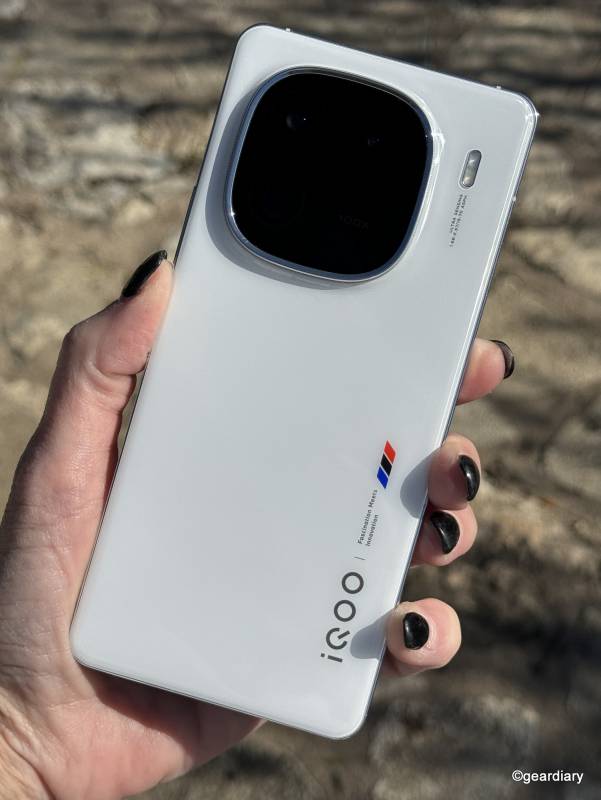
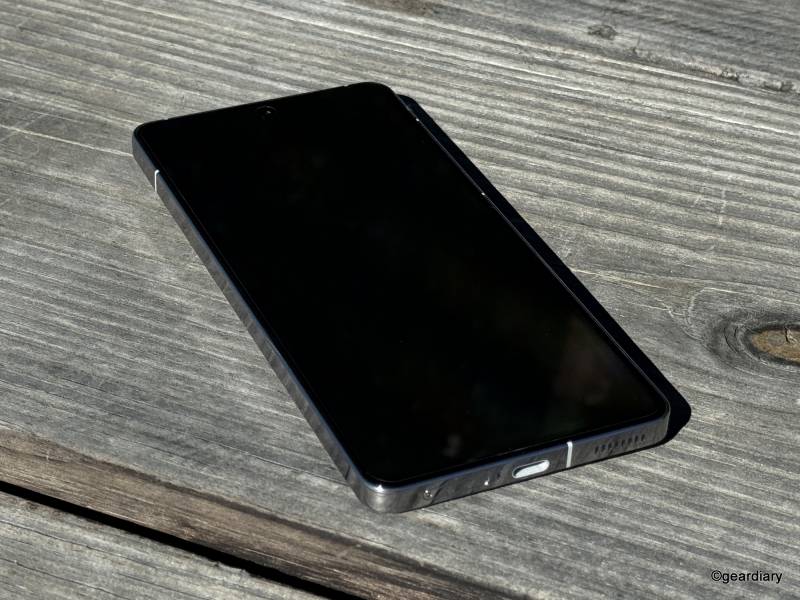

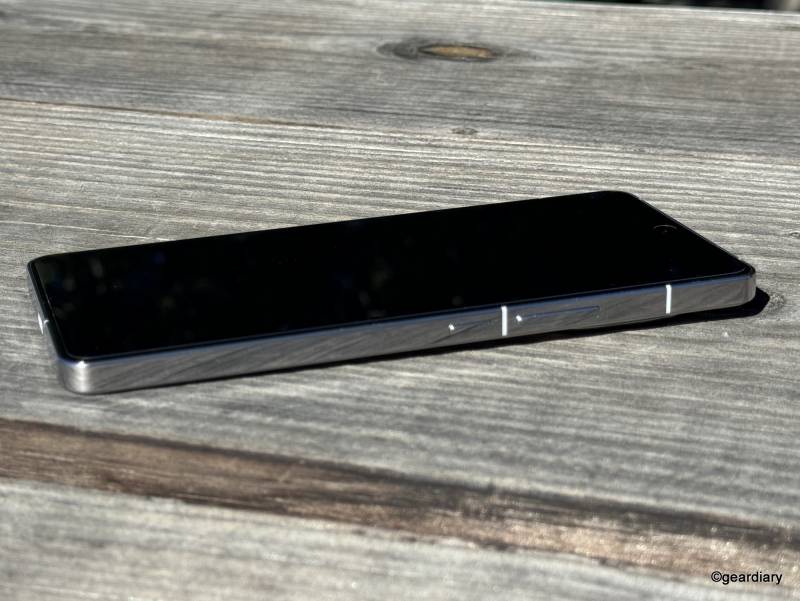
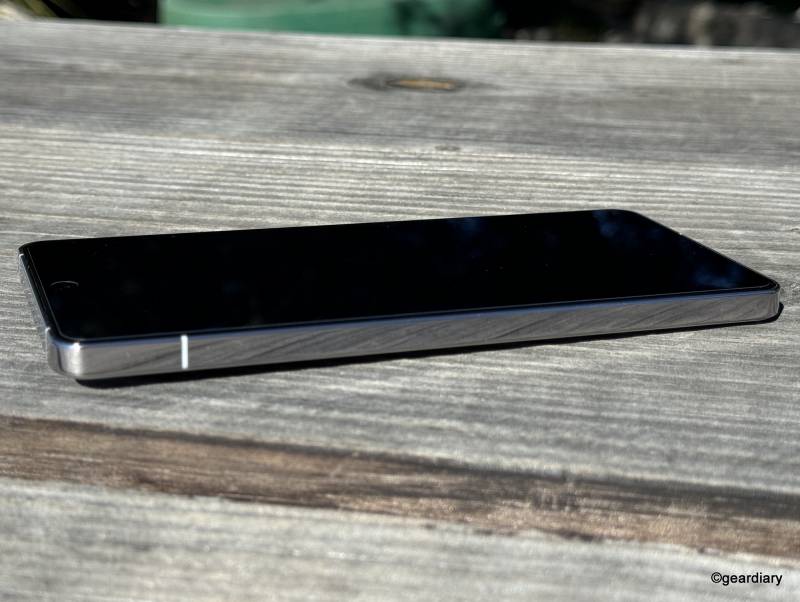




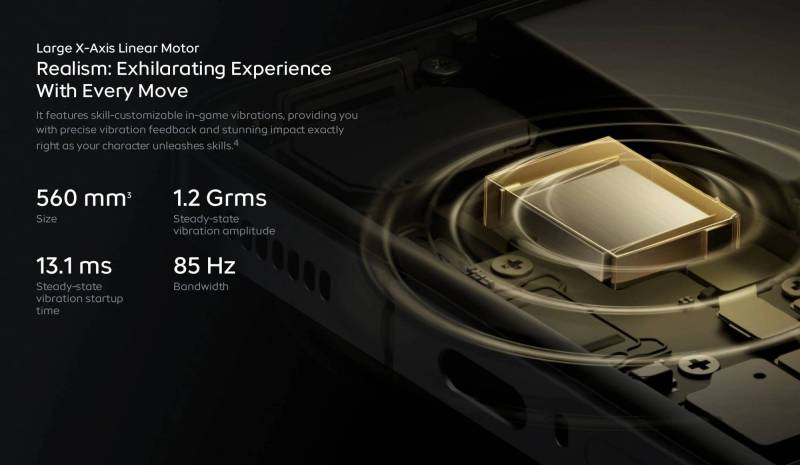
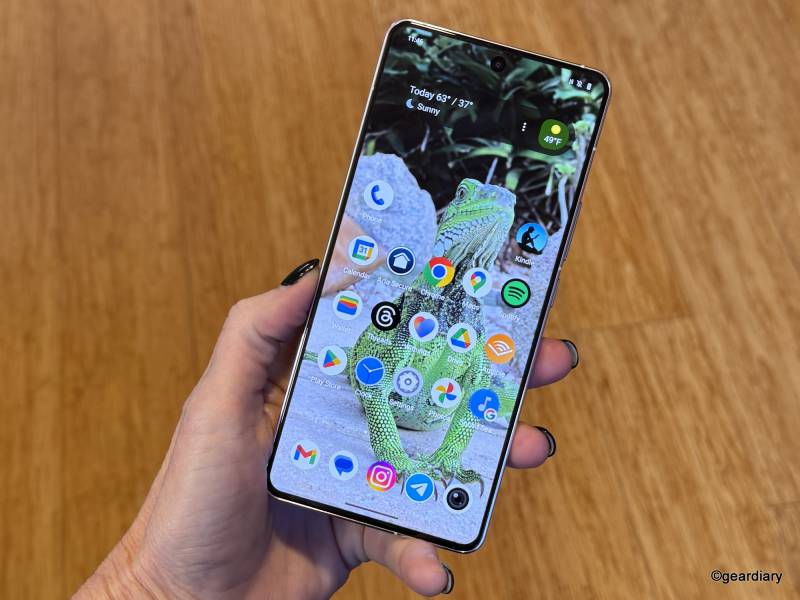
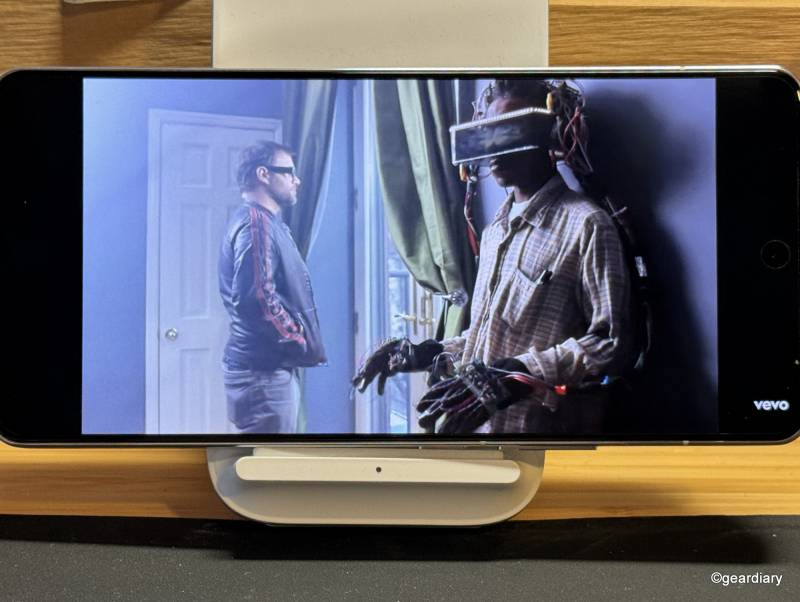
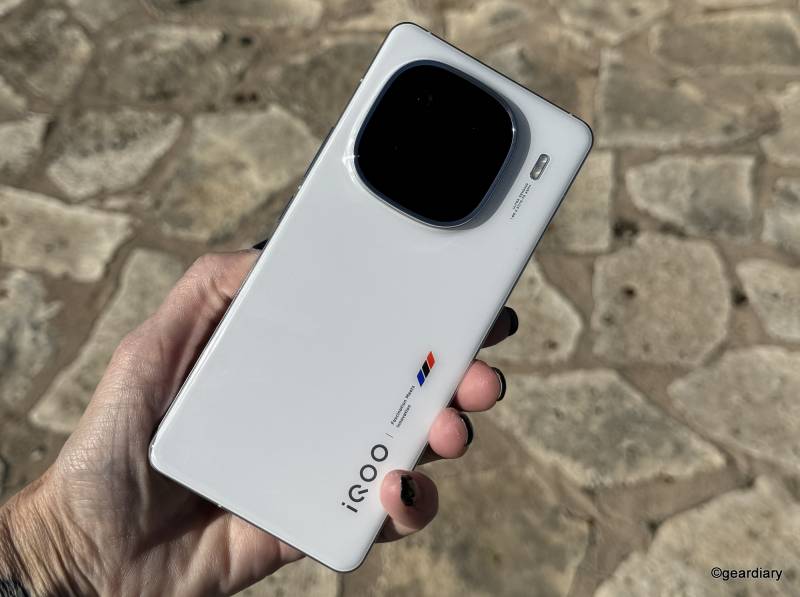
Be the first to comment on "IQOO 12 Legend Edition Review: A Sporty Exterior Hints at the Power Inside"